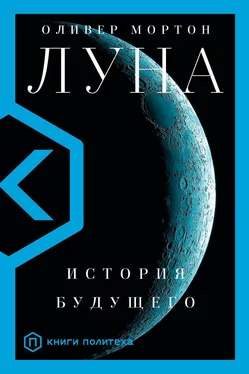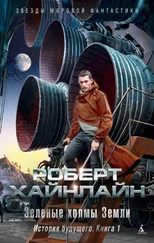Scott, David Meerman, Jurek, Richard. (2014). Marketing the Moon: The Selling of the Apollo Lunar Program. MIT Press.
Scott, Zack. (2017). Apollo: The Extraordinary Visual History of the Iconic Space Programme. Wildfire.
Serviss, Garrett P. (1898). «Edison’s conquest of Mars». New York Evening Journal , January and February.
Silk, Joseph. (2018). «Put telescopes on the far side of the Moon». Nature 553:6.
Simak, Clifford. (1960). «The trouble with Tycho». Amazing Stories , October.
Sleep, Norman H., Zahnle, Kevin. (1998). «Refugia from asteroid impacts on early Mars and the early Earth». Journal of Geophysical Research 103:28,528–28,529, 28,544.
Sobel, Dava. (2005). The Planets. Fourth Estate.
Spudis, Paul D. (1996). The Once and Future Moon. Smithsonian Institution Press.
Spudis, Paul D. (2016). The Value of the Moon: How to Explore, Live, and Prosper in Space Using the Moon’s Resources. Smithsonian Institution Press.
Spudis, Paul D., Richards, Robert. (2018). «Mission to the Rima Bode Regional Pyroclastic Deposit». Presentation at the Lunar Science for Landed Missions workshop, NASA Ames Research Center, January.
St Clair, Kassia. (2018). The Golden Thread: How Fabric Changed History . John Murray.
Stephenson, Neal. (2015). Seveneves. HarperCollins.
Sterzick, Michael F., Bagnulo, Stefano, Palle, Enric. (2011). «Biosignatures as revealed by spectropolarimetry of Earthshine». Nature 483:64–66.
Stubbs, Timothy, Collier, Michael, Farrell, Bill, Keller, John, Espley, Jared, Mesarch, Michael, Chai, Dean, Choi, Michael, Vondrak, Richard, Purucker, Michael, Malphrus, Ben, Zucherman, Aaron, Hoyt, Robert, Tsay, Michael, Halekas, Jasper, Johnson, Tom, Clark, Pam, Kramer, Georgiana, Glenar, Dave, Gruesbeck, Jacob. (2018). «Bi-Sat Observations of the Lunar Environment Above Swirls (BOLAS): Tethered microsat investigation of space weathering and the water cycle at the Moon». Paper presented at the 49th Lunar and Planetary Science Conference , abstract 2394.
Swanwick, Michael. (1992). Griffin’s Egg. Legend.
Tennyson, Alfred Lord. (1842). «Locksley Hall». In Poems. Moxon.
Tumlinson, Rick N., with Medlicott, Erin R. (eds.). (2005). Return to the Moon. Apogee Books.
Vance, Ashlee. (2015). Elon Musk: How the Billionaire CEO of SpaceX and Tesla Is Shaping Our Future. Virgin Books.
Varley, John. (1992). Steel Beach. Ace Books.
Verne, Jules. (1865). De la Terre a la Lune.
Verne, Jules. (1870). Autour de la Lune.
Von Trier, Lars. (2011). «Melancholia». Zentropa.
Waltham, David. (2016). Lucky Planet: Why Earth Is Exceptional — and What That Means for Life in the Universe. Icon Books.
Weir, Andy. (2017). Artemis. Del Rey.
Wells, H. G. (1898). The War of the Worlds. William Heinemann.
Wells, H. G. (1901). The First Men in the Moon. Bowen-Merrill.
Wells, H. G. (1902). The Discovery of the Future. Fisher Unwin.
Westwick, Peter J. (2018). «From the Club of Rome to Star Wars: The era of limits, space colonization and the origins of SDI». In Geppert, Alexander (ed.), Limiting Outer Space: Astroculture After Apollo. Springer.
Whitaker, Ewen A. (2008). Mapping and Naming the Moon: A History of Lunar Cartography and Nomenclature. Cambridge University Press.
Wilhelms, Don A. (1993). To a Rocky Moon: A Geologist’s History of Lunar Exploration. University of Arizona Press.
Wilkins, John. (1638). The Discovery of a World in the Moone.
Williamson, Jack, Breuer, Michael. (1931). «The Birth of a New Republic». Amazing Stories Quarterly.
Wingo, Dennis. (2004). Moonrush: Improving Life on Earth with the Moon’s Resources. Apogee Books.
Wingo, Dennis. (2016). «Site selection for lunar industrialization, economic development, and settlement». New Space 4:19–39.
Wood, Gillen D’Arcy. (2014). Tambora: The Eruption That Changed the World. Princeton University Press.
Woods, David. (2016). NASA Saturn V Manual. Haynes.
Woods, David, with others. (ongoing). Apollo Flight Journal. https://history.nasa.gov/afj/
Woolf, N. J., Smith, P. S., Traub, W. A., Jucks, K. W. (2002). «The spectrum of earthshine: A pale blue dot observed from the ground». Astrophysical Journal 574:430–433.
Zubrin, Robert. (2018). «Moon direct». New Atlantis , October 31st.
Перевод В. Хинкиса и С. Хоружего.
Член Конгресса, недовольный таким, по его мнению, капризом ученых, отметил: «[Геологическая] служба стала такой бесполезной, что один из ее самых уважаемых сотрудников не может найти занятия важнее, чем сидеть всю ночь напролет, глазея на Луну». (Здесь и далее, если не указано иное, — прим. автора.)
При этом любителям не под силу направлять лазерные лучи на уголковые отражатели «Аполлона». В серии «Теории Большого взрыва» под названием «Лунное возбуждение» в этом отношении искажают истину.
По словам Брайана Ино, записавшего альбом Apollo, который стал саундтреком к фильму «Для всего человечества» и явил собой великолепный образчик размышлений о познании Луны, из тех астронавтов, кто вообще брал аудиозаписи на Луну, все, за исключением одного, предпочитали кассеты с музыкой в стилях кантри и вестерн. В том числе поэтому при записи альбома Ино использовал стил-гитару.
Разница впечатлений от разных ракурсов отчасти объясняется синтаксисом кинематографа. Как правило, драма движется горизонтально — перемещение от одной стороны экрана к другой ведет зрителя во времени. Снятое слева направо появление Звезды Смерти (космической станции, которую легко спутать с Луной), выплывающей из-за планеты Явин, служит развитию сюжета: прибегая к этому приему, Лукас усиливает напряжение. При вертикальном движении камеры возникает пауза, или безвременье: взгляд вверх выводит повествование на новый уровень. Таким образом, расположение Земли, Луны и Солнца у Кубрика позволяет режиссеру выйти за границы сюжета и драмы и показать величие бескрайнего космоса, определяемого лишь перспективой.
Читать дальше
Конец ознакомительного отрывка
Купить книгу








![Роберт Хайнлайн - Пасынки Вселенной. История будущего. Книга 2 [сборник litres]](/books/395026/robert-hajnlajn-pasynki-vselennoj-istoriya-buducheg-thumb.webp)

